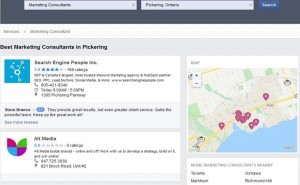
I recently had a participant tell me that my Agile and Scrum Training for Teams class was 1,000% better than he expected. Which I took as a great compliment, even though I noted the hyperbole.
When pressed to explain why, he said that his previous Agile or Scrum Training course had been horrible. Which got me wondering if I was that much better, or if the expectations were simply low.
The bottom line is that Agile and Scrum Training represent a significant investment. Maximize the return on your agile and scrum training investment and help your teams get productive as quickly as possible.
Agile and Scrum Training Should be Fun and Engaging
Training should never be horrible, especially Agile Training. While some training may be characterized as death by powerpoint, Agile Training should be interactive and high energy.
I believe that people will best internalize the Agile Values and Principles by practicing them. I rely heavily on hands-on exercises and that is what participants always comment on.
I typically use a kanban board in the classroom to track progress. Maybe I take it for granted that all trainers use various approaches that help keep the training interesting and engaging.
Engaging participants during Agile and Scrum Training is important because are being asked to do something different. Whenever we ask people to change how they are doing things, that is going to stress some people out.
Or they will resist, or defend current ways of working. So it is helpful to make the training fun and very engaging so that people give Agile a fair trial.
I am inspired by some Scrum trainers I know who use no powerpoint at all. Instead, they just do team exercises. I don’t sit through many boring classes because I have a pretty low tolerance for boredom. If I sit in a training class that doesn’t engage me, I lose interest and begin thinking other more interesting things.
Agile Training is Critical for Successful Agile Transformation
If you are leading an Agile Transformation, the agile learning helps to get people excited about and prepared for the change. Participants that understand and internalize the Agile Values and Principles will help to move the transformation along. Change is always easier when people understand both what is changing and why it is changing.
This is a mistake that I frequently see in organizations that want to cut corners during a transformation. They either reduce or eliminate training (see Why You Need Agile Training), or they provide inadequate or boring training for their participants.
In the case I cited above, the Agile training that was called ‘horrible’ was provided by a major consulting firm that is a household name. They scheduled mass training for everyone that provided a 40,000-foot overview on Agile and Scrum but lacked any engagement or hands-on exercises. Participants walked away considering it a big waste.
What Are The Elements of a Good Agile Training Course?
Can we isolate the elements that are important to a good or great Agile Training Class? What do you think is effective when it comes to Agile and Scrum Training?
Agile leaders should review the following list of the things that I have found effective with courses I have taken or taught.
1. Agile Training Should be Engaging
In order for training to really stick, people need to engage with the material. It could be an exercise that they do, or it could even be a discussion as a pair or a small group.
2. Agile Training MUST be Interactive
Similar to the previous point, I believe in courses with heavy participation. Students today don’t want the “sage from the stage” to kill them with PowerPoints laden with wisdom.
They want someone who knows the material to curate it for them and provide an opportunity for them to learn what they need to learn. Memorizing the 12 Agile Principles may not be important to you right now, but working together with your fellow classmates may feel good to you.
3. Agile Trainers Should Share Real-World Experience
Participants like to hear stories from others. The theory is good, but they may need to hear what others have tried and whether it worked for them.
I usually share stories and I ask other participants to share their stories. Stories of failure can be as helpful as stories of success so I try to encourage as much of either as possible.
4. Agile and Scrum Training Should be Fun
I try as much as possible to keep the environment fun. I play lots of music (good music IMHO). I create friendly competition between students or teams by playing Jeopardy or using Kahoots online.
I strive to give my participants an EXPERIENCE that they won’t soon forget. I believe that by making the training fun, they will associate positive emotions and the materials will “stick”.
5. Agile and Scrum Training Should be Just In Time
This one is not always possible. The idea here is to deliver training on a Just-In-Time basis. If people are not going to use the training in the near future, they will quickly forget what they learned.
As an example, I teach a lot of teams how to use Agile in my 2-day “Agile and Scrum Training for Teams” class. This training is designed to include the whole team – Dev Team members, the Scrum Master, and the Product Owner.
It helps when the team takes the training together and hears the same thing. Where possible, we schedule this training to be immediately prior to the team’s first sprint. The learning tends to stick better.
Alternatively, I’ve delivered this training after the team has been using Agile and Scrum for a few weeks and they have questions about what they are supposed to be doing.
So there you have it, five key things that I think help to make Agile and Scrum Training as effective as possible. What other thoughts or ideas do you have? What has proved helpful to you?
This article originally appeared here and has been republished with permission
Business & Finance Articles on Business 2 Community
(30)
Report Post






